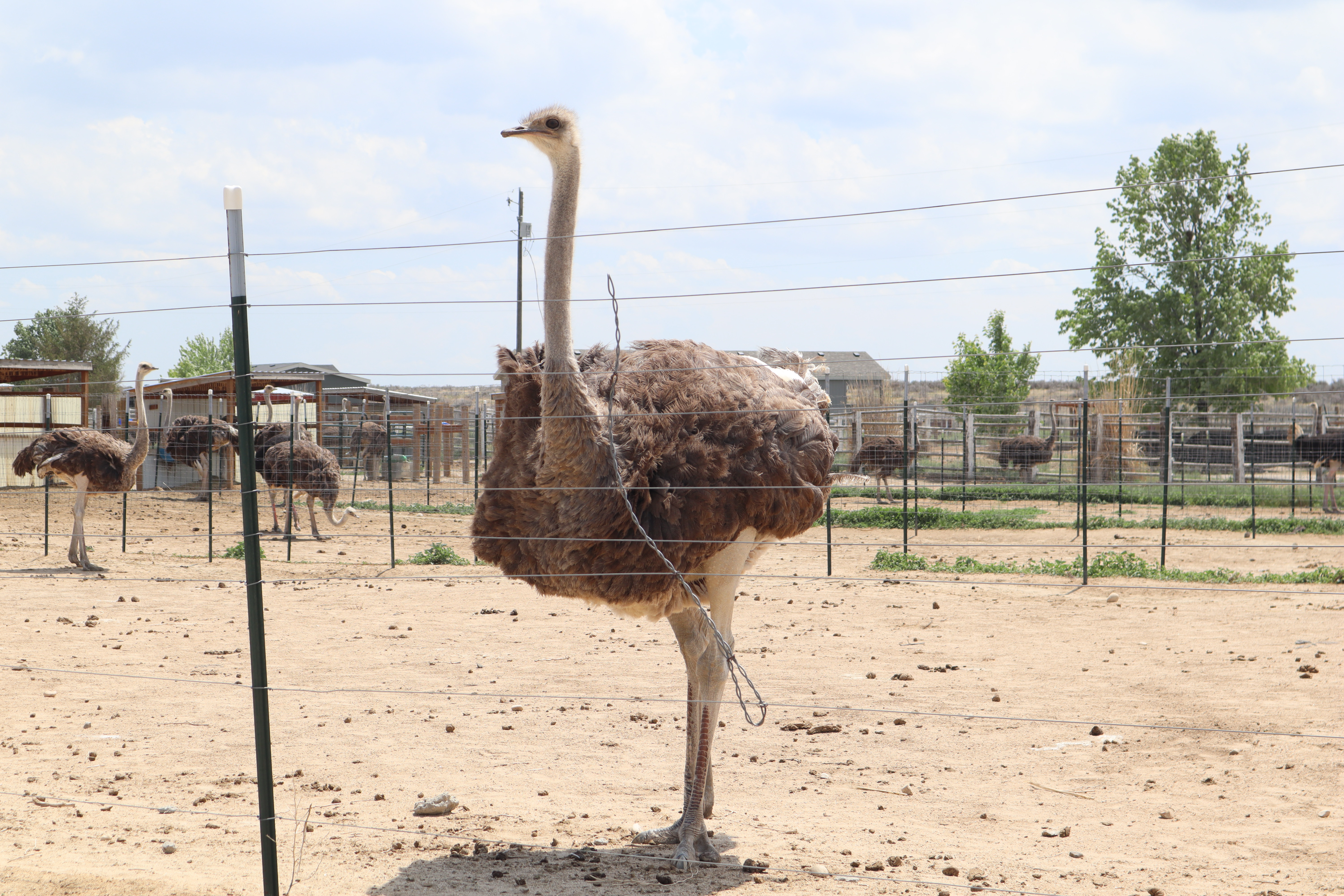|
Ostrich Oil
Ostrich oil is an oil derived from the fat of ostriches. Ostrich oil is composed of 36.51% of saturated fat, 46.75% of monounsaturated fat, and 18.24% of polyunsaturated fat. Ostrich oil contains fatty acids, such as omega-3, omega-6, and omega-9. It also contains vitamins and minerals like vitamin E and selenium, which serve as natural antioxidants. Emu oil in the USA has a similar composition to ostrich oil, but ostrich oil has a higher omega-3 content, containing 2.1% compared to 0.25% in emu oil. Ostrich oil has antibacterial properties, and is used for various skincare purposes, such as inflammation reduction. Due to the moisturizing properties, ostrich oil is currently used in cosmetic formulations and food chemistry. Ostrich oil is also used in the food industry as it has fatty acids and tocopherols, and a low cholesterol content. See also * Emu oil * Ostrich meat Ostrich meat is a type of red meat obtained from the ostrich, a large flightless bird native to Africa. ... [...More Info...] [...Related Items...] OR: [Wikipedia] [Google] [Baidu] |
Emu Oil
The emu (; ''Dromaius novaehollandiae'') is a species of flightless bird endemic to Australia, where it is the tallest native bird. It is the only extant member of the genus ''Dromaius'' and the third-tallest living bird after its African ratite relatives, the common ostrich and Somali ostrich. The emu's native ranges cover most of the Australian mainland. The Tasmanian, Kangaroo Island and King Island subspecies became extinct after the European settlement of Australia in 1788. The emu has soft, brown feathers, a long neck, and long legs. It can grow up to in height. It is a robust bipedal runner that can travel great distances, and when necessary can sprint at . It is omnivorous and forages on a variety of plants and insects, and can go for weeks without eating. It drinks infrequently, but takes in copious amounts of fresh water when the opportunity arises. Breeding takes place in May and June, and fighting among females for a mate is common. Females can mate several t ... [...More Info...] [...Related Items...] OR: [Wikipedia] [Google] [Baidu] |
Ointments
A topical medication is a medication that is applied to a particular place on or in the body. Most often topical medication means application to body surfaces such as the skin or mucous membranes to treat ailments via a large range of classes including creams, foams, gels, lotions, and ointments. Many topical medications are epicutaneous, meaning that they are applied directly to the skin. Topical medications may also be inhalational, such as asthma medications, or applied to the surface of tissues other than the skin, such as eye drops applied to the conjunctiva, or ear drops placed in the ear, or medications applied to the surface of a tooth. The word ''topical'' derives from Greek τοπικός ''topikos'', "of a place". Justification Topical drug delivery is a route of administering drugs via the skin to provide topical therapeutic effects. As skin is one of the largest and most superficial organs in the human body, pharmacists utilise it to deliver various drug ... [...More Info...] [...Related Items...] OR: [Wikipedia] [Google] [Baidu] |
Oils
An oil is any nonpolar chemical substance that is composed primarily of hydrocarbons and is hydrophobic (does not mix with water) and lipophilic (mixes with other oils). Oils are usually flammable and surface active. Most oils are unsaturated lipids that are liquid at room temperature. The general definition of oil includes classes of chemical compounds that may be otherwise unrelated in structure, properties, and uses. Oils may be animal, vegetable, or petrochemical in origin, and may be volatile or non-volatile. They are used for food (e.g., olive oil), fuel (e.g., heating oil), medical purposes (e.g., mineral oil), lubrication (e.g. motor oil), and the manufacture of many types of paints, plastics, and other materials. Specially prepared oils are used in some religious ceremonies and rituals as purifying agents. Etymology First attested in English 1176, the word ''oil'' comes from Old French ''oile'', from -4; we might wonder whether there's a point at which it's ... [...More Info...] [...Related Items...] OR: [Wikipedia] [Google] [Baidu] |
Ostriches
Ostriches are large flightless birds. Two living species are recognised, the common ostrich, native to large parts of sub-Saharan Africa, and the Somali ostrich, native to the Horn of Africa. They are the heaviest and largest living birds, with adult common ostriches weighing anywhere between 63.5 and 145 kilograms and laying the largest eggs of any living land animal.Del Hoyo, Josep, et al. Handbook of the birds of the world. Vol. 1. No. 8. Barcelona: Lynx edicions, 1992. With the ability to run at 70 km/h (43.5 mph), they are the fastest birds on land. They are farmed worldwide, with significant industries in the Philippines and in Namibia. South Africa produces about 70% of global ostrich products, with the industry largely centered around the town of Oudtshoorn. Ostrich leather is a lucrative commodity, and the large feathers are used as plumes for the decoration of ceremonial headgear. Ostrich eggs and meat have been used by humans for millennia. Ostrich ... [...More Info...] [...Related Items...] OR: [Wikipedia] [Google] [Baidu] |
Ostrich Farming In North America
Ostrich farming in North America refers to the practice of breeding, raising, and managing ostriches for their meat, feathers, leather, oil, and other byproducts. While ostriches are native to Africa, their farming has become increasingly popular in North America North America is a continent in the Northern Hemisphere, Northern and Western Hemisphere, Western hemispheres. North America is bordered to the north by the Arctic Ocean, to the east by the Atlantic Ocean, to the southeast by South Ameri ... due to the demand for alternative and sustainable meat sources, as well as the unique characteristics of ostrich products. Ostriches require less water and feed than cattle, and their farming results in lower greenhouse gas emissions. History Ostrich farming in North America began in the late 19th century, initially focusing on the production of feathers, which were highly prized for fashion accessories. The first ostrich farm was established by Charles Sketchley in Cal ... [...More Info...] [...Related Items...] OR: [Wikipedia] [Google] [Baidu] |
Ostrich Meat
Ostrich meat is a type of red meat obtained from the ostrich, a large flightless bird native to Africa. Known for its health benefits and sustainability, ostrich meat has gained popularity worldwide, particularly in health-conscious and gourmet markets. It tends to be darker than beef due to the high levels of final pH. History The consumption of ostrich meat dates back to ancient times, particularly in Africa where ostriches are native. The meat was traditionally hunted and consumed by various indigenous cultures. In the late 19th and early 20th centuries, ostrich farming began to spread to other parts of the world, including North America, Europe, and Australia, primarily driven by the demand for ostrich feathers. Today, ostrich meat is farmed commercially in various parts of the world, including the United States, South Africa, and Australia. Consumers can purchase ostrich meat in the United States from a few of the current ostrich farms including Amaroo Hills, American Ostr ... [...More Info...] [...Related Items...] OR: [Wikipedia] [Google] [Baidu] |
Cholesterol
Cholesterol is the principal sterol of all higher animals, distributed in body Tissue (biology), tissues, especially the brain and spinal cord, and in Animal fat, animal fats and oils. Cholesterol is biosynthesis, biosynthesized by all animal Cell (biology)#Eukaryotic cells, cells and is an essential structural and cholesterol signaling, signaling component of animal cell membranes. In vertebrates, hepatocyte, hepatic cells typically produce the greatest amounts. In the brain, astrocytes produce cholesterol and transport it to neurons. It is absent among prokaryotes (bacteria and archaea), although there are some exceptions, such as ''Mycoplasma'', which require cholesterol for growth. Cholesterol also serves as a Precursor (chemistry), precursor for the biosynthesis of steroid hormones, bile acid and vitamin D. Elevated levels of cholesterol in the blood, especially when bound to low-density lipoprotein (LDL, often referred to as "bad cholesterol"), may increase the risk of ... [...More Info...] [...Related Items...] OR: [Wikipedia] [Google] [Baidu] |
Tocopherol
Tocopherols (; TCP) are a class of organic compounds comprising various methylated phenols, many of which have vitamin E activity. Because the vitamin activity was first identified in 1936 from a dietary fertility factor in rats, it was named ''tocopherol'', from Greek τόκος ''tókos'' 'birth' and φέρειν ''phérein'' 'to bear or carry', that is 'to carry a pregnancy', with the ending ''-ol'' signifying its status as a chemical alcohol. α-Tocopherol is the main source found in supplements and in the European diet, where the main dietary sources are olive and sunflower oils, while γ-tocopherol is the most common form in the American diet due to a higher intake of soybean and corn oil. Forms Vitamin E exists in eight different forms, four tocopherols and four tocotrienols. All feature a chromane ring, with a hydroxyl group that can donate a hydrogen atom to reduce free radicals and a hydrophobic side chain that allows for penetration into biological membranes. B ... [...More Info...] [...Related Items...] OR: [Wikipedia] [Google] [Baidu] |
Inflammation
Inflammation (from ) is part of the biological response of body tissues to harmful stimuli, such as pathogens, damaged cells, or irritants. The five cardinal signs are heat, pain, redness, swelling, and loss of function (Latin ''calor'', ''dolor'', ''rubor'', ''tumor'', and ''functio laesa''). Inflammation is a generic response, and therefore is considered a mechanism of innate immunity, whereas adaptive immunity is specific to each pathogen. Inflammation is a protective response involving immune cells, blood vessels, and molecular mediators. The function of inflammation is to eliminate the initial cause of cell injury, clear out damaged cells and tissues, and initiate tissue repair. Too little inflammation could lead to progressive tissue destruction by the harmful stimulus (e.g. bacteria) and compromise the survival of the organism. However inflammation can also have negative effects. Too much inflammation, in the form of chronic inflammation, is associated with variou ... [...More Info...] [...Related Items...] OR: [Wikipedia] [Google] [Baidu] |
Antibacterial
An antibiotic is a type of antimicrobial substance active against bacteria. It is the most important type of antibacterial agent for fighting bacterial infections, and antibiotic medications are widely used in the treatment and prevention of such infections. They may either kill or inhibit the growth of bacteria. A limited number of antibiotics also possess antiprotozoal activity. Antibiotics are not effective against viruses such as the ones which cause the common cold or influenza. Drugs which inhibit growth of viruses are termed antiviral drugs or antivirals. Antibiotics are also not effective against fungi. Drugs which inhibit growth of fungi are called antifungal drugs. Sometimes, the term ''antibiotic''—literally "opposing life", from the Greek roots ἀντι ''anti'', "against" and βίος ''bios'', "life"—is broadly used to refer to any substance used against microbes, but in the usual medical usage, antibiotics (such as penicillin) are those produced ... [...More Info...] [...Related Items...] OR: [Wikipedia] [Google] [Baidu] |
Antioxidant
Antioxidants are Chemical compound, compounds that inhibit Redox, oxidation, a chemical reaction that can produce Radical (chemistry), free radicals. Autoxidation leads to degradation of organic compounds, including living matter. Antioxidants are frequently added to industrial products, such as polymers, fuels, and lubricants, to extend their usable lifetimes. Foods are also treated with antioxidants to prevent Food spoilage, spoilage, in particular the rancidification of Vegetable oil, oils and fats. In Cell (biology), cells, antioxidants such as glutathione, mycothiol, or bacillithiol, and enzyme systems like superoxide dismutase, inhibit damage from oxidative stress. Known diet (nutrition), dietary antioxidants are vitamins vitamin A, A, vitamin C, C, and vitamin E, E, but the term has also been applied to various compounds that exhibit antioxidant properties in vitro, having little evidence for antioxidant properties in vivo. Dietary supplements marketed as antioxidants hav ... [...More Info...] [...Related Items...] OR: [Wikipedia] [Google] [Baidu] |









